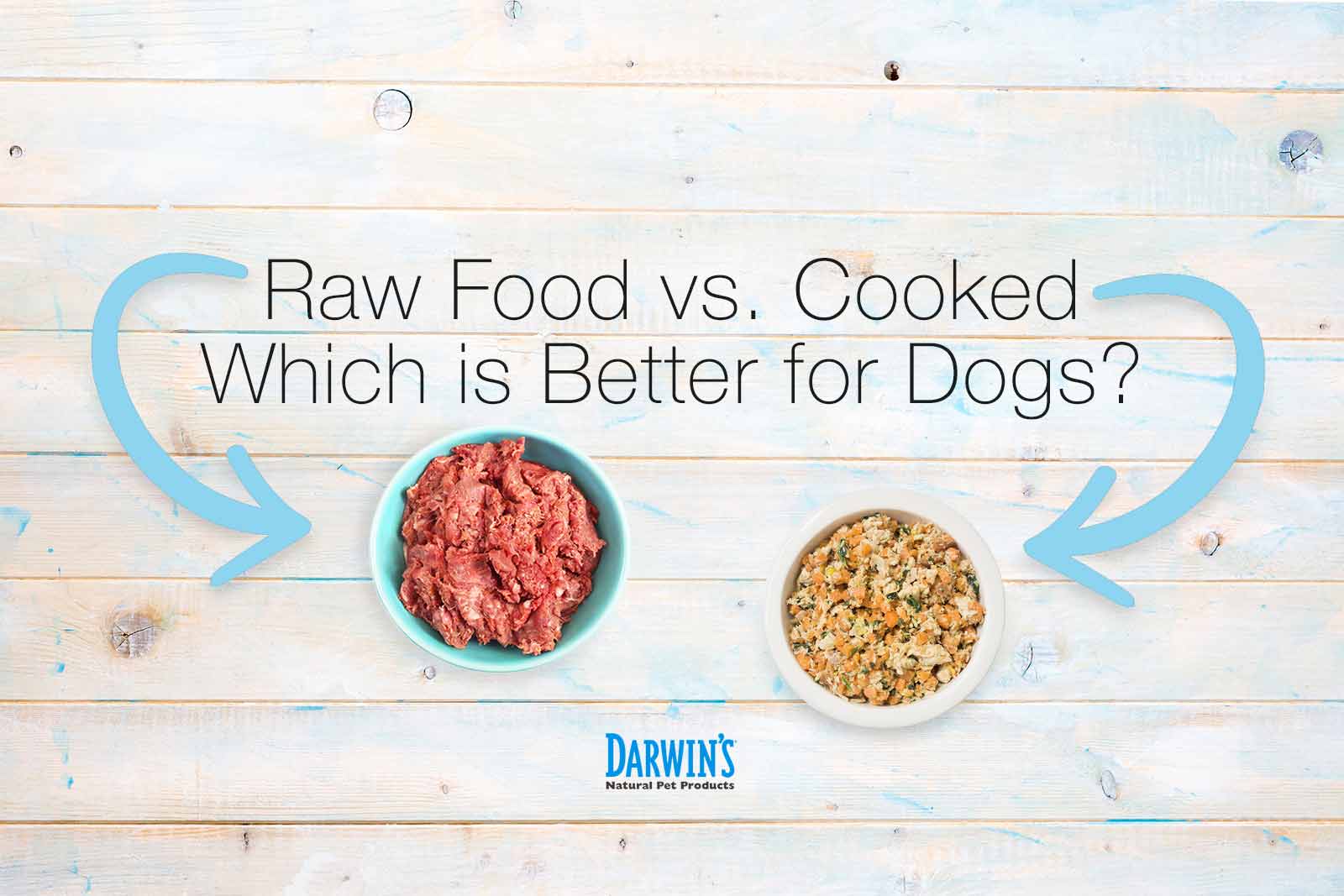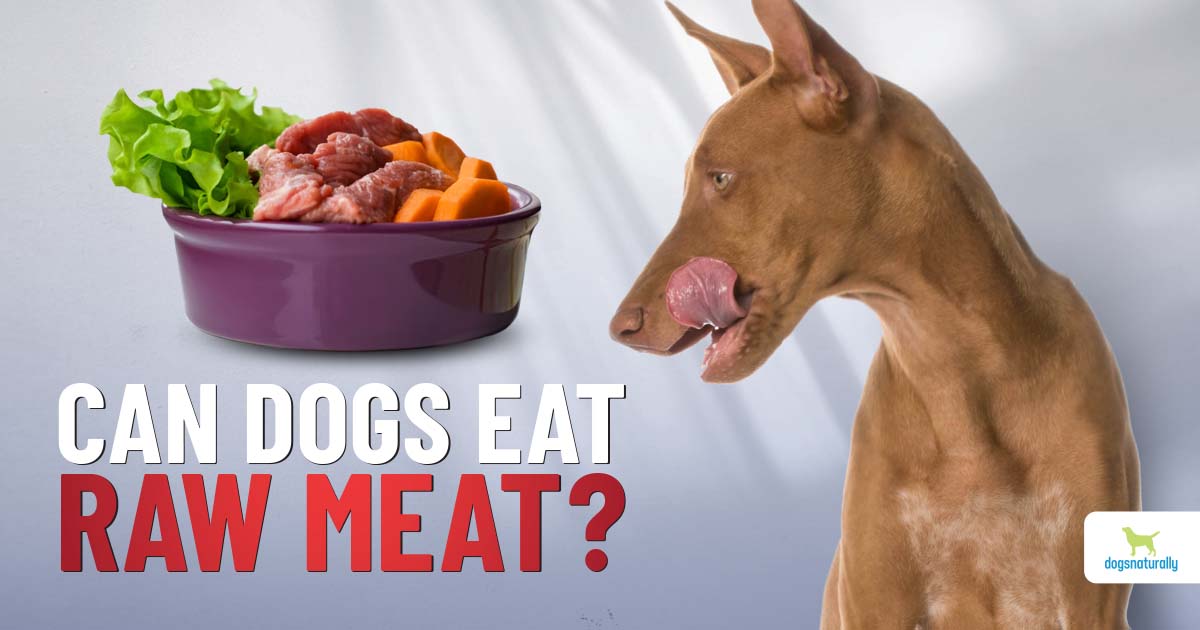Raw food can be harmful to dogs due to potential bacterial contamination and nutritional imbalances. Consult a veterinarian before making any dietary changes for your pet.
Raw food diets for dogs have gained popularity, driven by the belief that they mimic a canine's natural eating habits. Advocates argue that raw diets improve coat condition, energy levels, and overall health. However, these diets can pose risks. Bacteria like Salmonella and E.
Coli may contaminate raw meat, leading to serious health issues for both dogs and their owners. Nutritional imbalances can also occur if the diet lacks essential vitamins and minerals. Before switching your dog to a raw food diet, it's vital to understand these risks and consult with a veterinarian. They can provide guidance tailored to your dog's specific health needs and lifestyle.
Introduction To Raw Food Diets For Dogs
The raw food diet for dogs focuses on natural foods. This diet includes raw meat, bones, fruits, and vegetables. Many pet owners believe it mimics a dog’s natural diet. Dogs are carnivores, so they thrive on fresh, unprocessed foods. Some argue that raw diets improve health and energy levels.
Popularity Of Raw Diets
The raw food diet has gained popularity among dog owners. Many pet enthusiasts advocate for its benefits. Here are some reasons for its rise:
- Health benefits: Owners report improved skin and coat.
- Energy levels: Dogs may show increased vitality.
- Weight management: Raw diets can help with weight control.
- Natural ingredients: Many prefer organic and unprocessed foods.
Key Components Of A Raw Diet
A well-balanced raw diet includes various key components. Each part plays a role in a dog’s overall health. The main components are:
| Component | Description |
|---|---|
| Raw Meat | Provides protein and essential nutrients. |
| Raw Bones | Supports dental health and provides minerals. |
| Fruits | Offers vitamins and antioxidants. |
| Vegetables | Provides fiber and additional nutrients. |
Following a raw diet requires careful planning. Ensure the right balance of all components. Here are some tips:
- Consult a veterinarian for guidance.
- Research proper portion sizes.
- Rotate protein sources for variety.
- Monitor your dog's health regularly.

Credit: www.darwinspet.com
Historical Perspectives On Canine Diets
Understanding a dog's diet requires looking back in time. Dogs evolved from wolves. Their eating habits changed with domestication. This section explores how history shaped canine diets.
Evolutionary Eating Habits
Dogs share a common ancestor with wolves. Both species have similar digestive systems. Here are some key points about their evolutionary diets:
- Wolves are carnivorous. They primarily eat meat.
- They also consume fruits, vegetables, and grains.
- Wolves hunt in packs, targeting larger animals.
- They are opportunistic eaters, adapting to available food.
As dogs evolved, their diets began to change. They became less reliant on hunting. This change set the stage for a different approach to feeding.
Domestication And Diet Changes
Domestication started over 15,000 years ago. Early humans began to share food with dogs. This relationship altered canine diets significantly. Here are some changes that occurred:
- Dogs started eating human scraps.
- They adapted to a more omnivorous diet.
- Availability of food sources increased.
- Feeding practices varied by culture and region.
Today, commercial dog food reflects these historical changes. Ingredients vary widely. They now include meat, grains, and vegetables. This evolution raises questions about raw food diets.
Understanding these historical contexts helps pet owners make informed choices. Knowing a dog's ancestry aids in choosing appropriate food.
Potential Benefits Of Raw Food For Dogs
Raw food diets for dogs have gained popularity. Many owners believe these diets improve their pet's health. Let's explore some of the potential benefits of raw food.
Improved Dental Health
Feeding dogs raw food can enhance their dental health. Chewing on raw bones and meat can:
- Reduce plaque buildup
- Prevent gum disease
- Strengthen jaw muscles
These benefits lead to fresher breath and healthier teeth. Regular chewing helps keep teeth clean and strong.
Enhanced Digestive Function
Raw food can support better digestion in dogs. A raw diet is often easier for dogs to digest than processed food. Key benefits include:
- Natural enzymes aiding digestion
- Higher moisture content
- Balanced nutrients
Many dogs on raw diets experience:
- Less gas
- Smaller, firmer stools
- Improved nutrient absorption
These factors contribute to overall health and vitality.
Risks And Concerns Of Raw Diets
Raw food diets for dogs have gained popularity. Many owners believe these diets are healthier. However, there are significant risks involved. Understanding these risks is essential for your dog's health.
Bacterial Contamination
Raw diets can contain harmful bacteria. These bacteria can cause serious illnesses in dogs. Common bacteria include:
- Salmonella
- E. coli
- Campylobacter
These pathogens can lead to:
- Vomiting
- Diarrhea
- Fever
Puppies, seniors, and sick dogs are more at risk. Proper food handling is crucial. Wash hands and surfaces after handling raw meat. Always store raw food at safe temperatures.
Nutritional Imbalance Threats
Raw diets can lead to nutritional imbalances. Dogs need specific nutrients to thrive. A raw diet may lack:
- Vitamins
- Minerals
- Essential fatty acids
Imbalances can cause health issues such as:
| Nutritional Deficiency | Potential Health Issues |
|---|---|
| Calcium | Bone problems |
| Vitamin E | Muscle weakness |
| Omega-3 fatty acids | Poor coat condition |
Consult a veterinarian before starting a raw diet. They can help create a balanced meal plan.
Critical Nutrients In Canine Health
Raw food diets for dogs raise many questions. One major concern is the balance of critical nutrients. Dogs need specific vitamins and minerals for overall health. Without these nutrients, dogs can face serious health issues. Understanding these requirements helps dog owners make informed decisions.
Essential Vitamins And Minerals
Dogs require a variety of essential vitamins and minerals for their well-being. Here are some key nutrients:
| Nutrient | Function | Sources |
|---|---|---|
| Vitamin A | Supports vision and skin health | Carrots, sweet potatoes |
| Vitamin D | Regulates calcium and phosphorus | Fish, liver |
| Calcium | Strengthens bones and teeth | Dairy, leafy greens |
| Iron | Boosts energy and immunity | Meat, spinach |
These nutrients play vital roles in maintaining health. A deficiency can lead to serious problems. It’s crucial to ensure dogs receive adequate amounts.
Balancing Fats And Proteins
Fats and proteins are crucial for a dog’s diet. They provide energy and support growth. Here’s how to balance them:
- Proteins: Important for muscle development. Include sources like chicken, beef, and fish.
- Fats: Essential for skin and coat health. Look for healthy fats like fish oil and flaxseed oil.
A balanced ratio is key. Aim for:
- 30% to 50% protein
- 10% to 20% fat
Each dog is unique. Consult a vet for personalized dietary advice. They can guide you in creating a balanced raw food diet.

Credit: www.dogsnaturallymagazine.com
Veterinary Insights On Raw Feeding
Raw feeding has gained popularity among pet owners. Many believe it offers health benefits for dogs. However, veterinarians express concerns about this diet. Their insights help us understand the pros and cons.
Professional Recommendations
Veterinarians have mixed opinions on raw feeding. Some support it, while others warn against it. Here are key points from veterinary professionals:
- Balanced Nutrition: Dogs need a complete diet. Raw food may lack vital nutrients.
- Risk of Bacteria: Raw meat can harbor harmful bacteria. Salmonella and E. coli pose risks to dogs and humans.
- Individual Health Needs: Each dog has unique nutritional requirements. Consult a vet before changing diets.
- Monitoring Health: Regular check-ups are essential. Monitor your dog’s health with a vet’s guidance.
Case Studies And Clinical Research
Research on raw feeding shows varied results. Some studies highlight benefits, while others reveal risks. Here are notable findings:
| Study/Case | Findings |
|---|---|
| Study A | Raw diets improved coat health in some dogs. |
| Study B | Increased risk of gastrointestinal infections. |
| Case C | Owner reported weight loss in a dog on raw diet. |
| Case D | Vets found nutrient deficiencies in raw-fed dogs. |
Research indicates potential benefits but highlights significant risks. Always consult with a veterinarian before making dietary changes.
Raw Food Diet Preparation And Safety
Preparing a raw food diet for dogs requires careful attention. Safety should always be a priority. Proper handling and storage of raw ingredients can prevent health issues. Understanding the differences between homemade and commercial raw foods is essential.
Safe Handling And Storage
Raw food can harbor harmful bacteria. Follow these steps to ensure safety:
- Wash Hands: Always wash your hands before handling raw food.
- Clean Surfaces: Use clean cutting boards and utensils.
- Separate Ingredients: Keep raw meat away from other foods.
- Store Properly: Refrigerate raw food immediately.
Use airtight containers to store raw ingredients. Keep the refrigerator temperature below 40°F. Thaw frozen raw food in the refrigerator, not on the counter.
Homemade Vs. Commercial Raw Foods
Choosing between homemade and commercial raw foods can be challenging. Here are the pros and cons:
| Type | Pros | Cons |
|---|---|---|
| Homemade |
|
|
| Commercial |
|
|
Both options can be safe. Consult your vet to find the best choice for your dog.
Real Owner Experiences With Raw Diets
Many pet owners share their journeys with raw food diets for dogs. These stories reveal both successes and challenges. Understanding these experiences can help you decide the best diet for your furry friend.
Success Stories
Many owners report positive changes after switching to a raw diet. Here are some common success stories:
- Improved Energy Levels: Dogs often show increased energy and playfulness.
- Healthier Coats: Shiny and soft fur is a frequent benefit.
- Better Digestion: Owners notice firmer stools and less gas.
- Weight Management: Many dogs achieve ideal weight on raw diets.
Here are a few real-life testimonials:
| Owner | Dog's Name | Result |
|---|---|---|
| Sarah | Max | More energy and improved coat health |
| John | Buddy | Weight loss and better digestion |
| Linda | Lucy | Shinier fur and playful behavior |
Challenges Faced By Pet Owners
While many dogs thrive on raw diets, some owners face challenges. Here are common issues encountered:
- Preparation Time: Raw diets require time for meal prep.
- Cost: Quality raw ingredients can be expensive.
- Food Safety: Handling raw meat safely is crucial.
- Diet Balance: Ensuring a balanced diet can be tricky.
Some owners share their struggles:
- Finding the right balance of nutrients.
- Dealing with picky eaters who refuse raw food.
- Managing the dog's transition from kibble to raw.
Each experience helps build a better understanding of raw diets for dogs.
Alternatives To Raw Feeding
Raw feeding may not suit every dog. Many alternatives offer balanced nutrition. Consider cooked homemade diets and high-quality commercial foods.
Cooked Homemade Diets
Cooking for your dog can provide safe and nutritious meals. A balanced homemade diet includes:
- Proteins: Chicken, beef, turkey, or fish.
- Carbohydrates: Brown rice, sweet potatoes, or oats.
- Vegetables: Carrots, peas, spinach, or broccoli.
- Fats: Fish oil or flaxseed oil for healthy skin.
Consult a vet before starting. Ensure the diet meets your dog’s needs. Use recipes that include proper vitamin and mineral supplements.
High-quality Commercial Foods
Commercial dog foods can be convenient and safe. Look for these features:
| Feature | Why It's Important |
|---|---|
| Meat as the first ingredient | Ensures high protein content. |
| No fillers | Prevents unnecessary calories. |
| Complete and balanced formula | Meets all dietary requirements. |
| Veterinary approval | Guarantees safety and quality. |
Choose brands with a good reputation. Read reviews and consult your vet for recommendations.
High-quality foods can support overall health and wellness. Your dog deserves the best nutrition possible.
Making An Informed Decision
Deciding on a raw food diet for dogs requires careful thought. Owners must weigh the benefits and risks. Knowledge is key to ensuring your dog's health.
Consulting With A Vet Nutritionist
Consulting a veterinarian who specializes in nutrition is essential. They can provide expert advice tailored to your dog. Here are some reasons why this is important:
- Understanding your dog's unique health needs.
- Identifying potential nutrient deficiencies.
- Receiving guidance on safe food handling.
- Developing a balanced meal plan.
A vet nutritionist will help you make informed choices. Their expertise can prevent health issues related to diet.
Assessing Individual Dog Needs
Every dog is different. Factors such as age, breed, and health status matter. Here’s a list of considerations:
- Age: Puppies need different nutrients than older dogs.
- Activity Level: Active dogs may require more calories.
- Health Conditions: Certain diseases may require special diets.
- Allergies: Some dogs may be allergic to raw ingredients.
Understanding these factors helps create the right diet. Monitor your dog’s reaction to any dietary changes.
| Dog Factor | Considerations |
|---|---|
| Age | Adjust nutrient levels based on life stage. |
| Activity Level | Higher energy dogs need more calories. |
| Health Conditions | Consult a vet for tailored dietary needs. |
| Allergies | Avoid ingredients that trigger allergic reactions. |

Credit: www.pawlicy.com
Frequently Asked Questions
Is Raw Food Safe For Dogs?
Raw food can be safe for dogs if prepared properly. It's essential to ensure that the diet is balanced and includes all necessary nutrients. However, there are risks associated with bacteria and parasites in raw meat. Consulting a veterinarian before switching diets is highly recommended.
What Are The Risks Of Feeding Dogs Raw Food?
Feeding raw food poses several risks, including bacterial infections and nutritional imbalances. Raw meat can harbor harmful pathogens like Salmonella and E. coli. Additionally, a poorly planned raw diet may lack essential vitamins and minerals. Always research and consult a veterinarian before making dietary changes.
Can Raw Food Improve My Dog's Health?
Some pet owners report improved health in dogs on raw diets. Benefits may include shinier coats, healthier teeth, and increased energy levels. However, scientific evidence on these claims is limited. It's important to tailor the diet to your dog’s specific needs and seek professional guidance.
What Should Be Included In A Raw Dog Diet?
A balanced raw dog diet typically includes muscle meat, bones, organs, and vegetables. Each component provides essential nutrients necessary for your dog's health. It's crucial to vary the diet to prevent deficiencies. Always consult with a veterinarian to create a well-rounded meal plan.
Conclusion
Raw food diets for dogs can offer benefits but come with risks. It's essential to weigh these factors carefully. Consult with a veterinarian before making significant dietary changes. A balanced diet tailored to your dog’s needs is crucial for their health.
Make informed choices to ensure your furry friend thrives.













